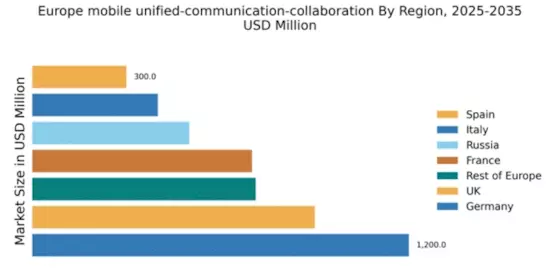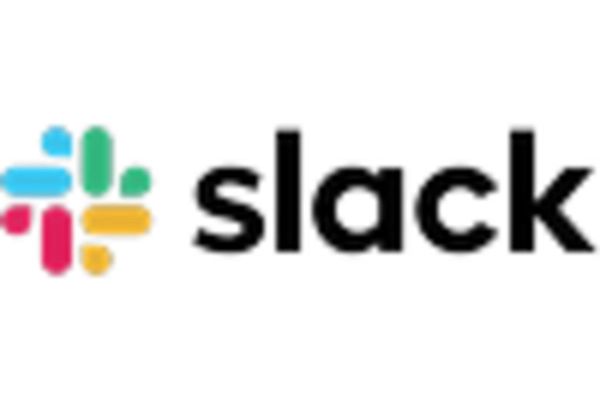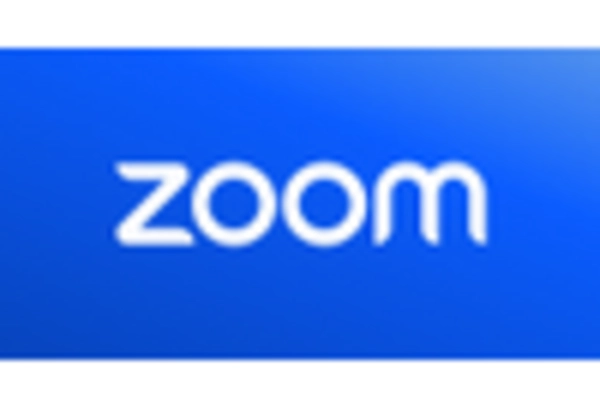Germany : Germany's Robust Digital Infrastructure
Germany holds a dominant position in the mobile unified-communication-collaboration market, with a market value of $1200.0 million, representing approximately 30% of the European market share. Key growth drivers include a strong emphasis on digital transformation, increased remote work adoption, and government initiatives promoting technological innovation. The regulatory environment is supportive, with policies aimed at enhancing cybersecurity and data protection, which are crucial for enterprise communication solutions. Additionally, Germany's advanced infrastructure facilitates seamless connectivity and collaboration across industries.
UK : UK's Shift to Remote Collaboration
The UK market for mobile unified-communication-collaboration is valued at $900.0 million, accounting for 22.5% of the European market. The surge in demand is driven by the rise of remote work and the need for efficient communication tools. Government initiatives, such as the Digital Strategy, aim to enhance digital skills and infrastructure. The competitive landscape features major players like Microsoft and Cisco, with London and Manchester being key markets. The business environment is vibrant, with a focus on tech startups and innovation in various sectors, including finance and healthcare.
France : France's Focus on Digital Transformation
France's mobile unified-communication-collaboration market is valued at $700.0 million, representing 17.5% of the European market. Growth is fueled by government initiatives promoting digital transformation and the increasing demand for remote collaboration tools. The regulatory framework supports innovation while ensuring data privacy. Key cities like Paris and Lyon are central to this market, with significant presence from players like Zoom and Slack. The competitive landscape is characterized by a mix of established firms and emerging startups, particularly in the tech and creative industries.
Russia : Russia's Diverse Communication Needs
Russia's market for mobile unified-communication-collaboration is valued at $500.0 million, making up 12.5% of the European market. The growth is driven by the increasing need for efficient communication in various sectors, including government and enterprise. Regulatory policies are evolving to support digital initiatives, while infrastructure improvements are underway. Key cities like Moscow and St. Petersburg are pivotal markets, with local players gaining traction alongside global giants like Cisco. The business environment is competitive, with a focus on adapting solutions to meet diverse regional needs.
Italy : Italy's Digital Communication Evolution
Italy's mobile unified-communication-collaboration market is valued at $400.0 million, representing 10% of the European market. The growth is driven by the increasing adoption of digital tools in businesses and government initiatives aimed at enhancing digital infrastructure. Cities like Milan and Rome are key markets, with a competitive landscape featuring both local and international players such as Avaya and RingCentral. The business environment is evolving, with a focus on sectors like manufacturing and services, which are increasingly reliant on effective communication solutions.
Spain : Spain's Collaborative Business Landscape
Spain's market for mobile unified-communication-collaboration is valued at $300.0 million, accounting for 7.5% of the European market. The growth is driven by the increasing demand for remote work solutions and government support for digital transformation. Key cities like Madrid and Barcelona are central to this market, with significant presence from players like Google and 8x8. The competitive landscape is marked by a mix of established firms and innovative startups, particularly in the tech and tourism sectors, which are rapidly adopting unified communication tools.
Rest of Europe : Varied Growth Across Europe
The Rest of Europe market for mobile unified-communication-collaboration is valued at $711.75 million, representing 17.5% of the European market. Growth is driven by varying regional demands and government initiatives supporting digital infrastructure. Countries like the Netherlands and the Nordics are notable for their advanced digital ecosystems. The competitive landscape features a mix of local and international players, with a focus on sectors such as education and healthcare. The business environment is diverse, with each country adapting solutions to meet specific needs and regulatory requirements.


















Leave a Comment